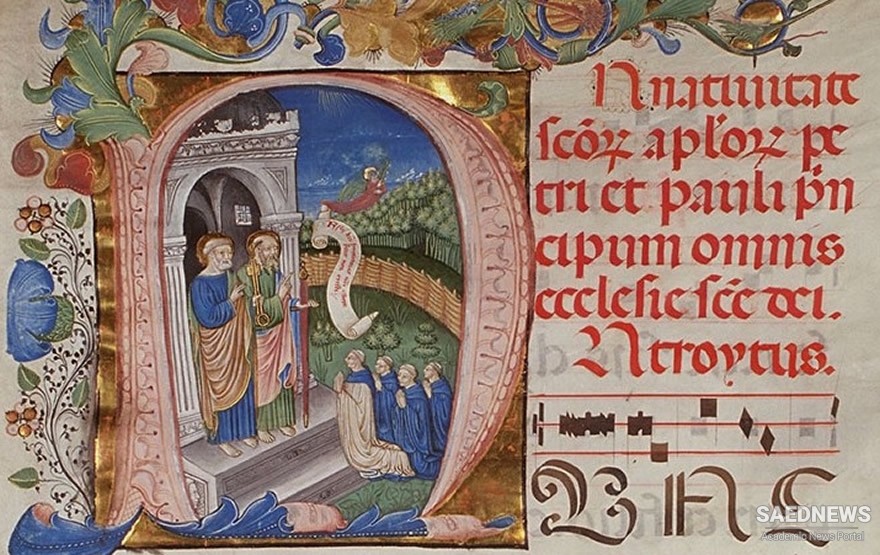Gregorian chant came North either in the minds and ears of cantors (Roman or Frankish) or in a book, called an antiphonary because it contained the antiphons of the mass or of the offices. That is, an antiphonary contained the texts, but since we have no Roman antiphonary from Carolingian times (only Frankish ones), we do not know whether the Roman books contained notated melodies. Indeed, we do not know precisely what the Roman books did contain, hence the infinitely complicated controversy about the origins of Gregorian chant. It has even been suggested that the whole repertory we know as Gregorian took final form only in the North during the 700s and 800s. But the difference between this final Frankish form and whatever Roman forms stood behind it was apparently a mere difference in “editions,” insignificant in comparison to the striking difference between the Gregorian repertory of mass propers (however and wherever preserved) and the indigenous Frankish chant. Our first antiphonaries are mainly Frankish from around 800; the first ones with music—also Frankish or under Frankish influence—from around 900. The antiphonary of the mass contained the proper of the mass, including introits, graduals, tracts, alleluias, offertories, and communions. It might also have contained miscellaneous items of unknown origin, possibly Roman, but more likely traditional Gallican remnants, imitations of Mozarabic or Byzantine chants, or Frankish novelties, The antiphonary of the office, much larger than that of the mass, contained antiphons and responsories. The musical notation of these earliest antiphonaries cannot be read unless one knows how the tune goes. But with the help of antiphonaries from after 1050, whose notation is clear, and allowing for the inescapable variants due to local interpretation and errors in transmission, it can be determined that these earliest antiphonaries contain basically the chants associated with the same texts in modern chant publications. One of the first activities of Frankish musicians, after copying and learning the Gregorian repertory, was to develop systematic ways of classifying and analyzing the chant so that it could more easily be taught in monasteries and cathedral schools. Frankish theorists cast about for likely teaching aids. Aurelian of Reomé, the earliest Frankish writer on music known to us by name, relied heavily on grammatical analogies. Others ransacked the late classical theorist Boethius (ca 480–?524) and other sources of classical antiquity for theoretical tools that might be useful.


 Gregorian Chant and Role of Franks in Development of Western Music
Gregorian Chant and Role of Franks in Development of Western Music














































